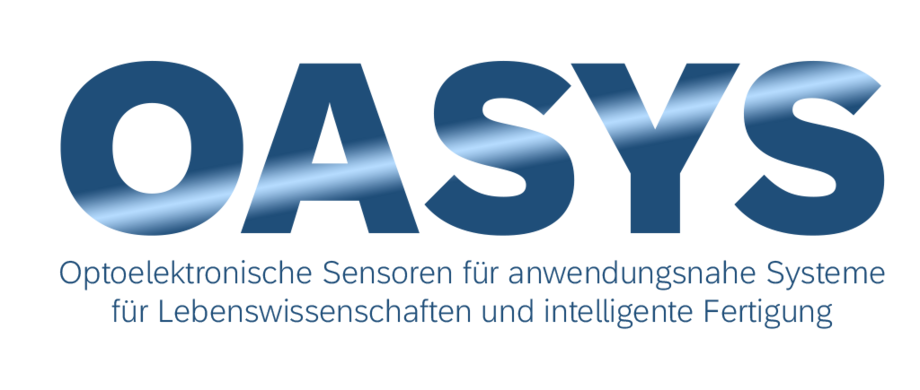Current projects The following projects are currently being worked on in cooperation with several partners:

Funding:
This BMBF-funded science project aims to support structural change in Lusatia.
Project duration:
11/2019 - 12/2021 (Phase I funding code 16ES1128K)
01/2022 - 12/2026 (Phase II funding code 16ME0420K)
Motivation and goal:
The Innovation Campus Electronics and Microsensor Technology Cottbus is a research cooperation between five partners.
- Brandenburg University of Technology Cottbus-Senftenberg (BTU)
- Fraunhofer Institute for Photonic Microsystems (IPMS)
- Fraunhofer Institute for Reliability and Microintegration (IZM)
- Ferdinand-Braun-Institut | Leibniz Institute for High Frequency Technology (FBH)
- IHP | Leibniz-Institute for Innovations for High Performance Electronics
- Thiem-Research GmbH
The transfer of R&D results and, in particular, technology-oriented spin-offs is to be accelerated and a contribution made to increasing the innovation and competitiveness of regional companies, research institutions and the Lusatia region as a whole and to creating jobs in the high-tech sector.
Approach:
The innovation campus aims to bring together the partners' expertise synergistically in Cottbus for the first time and to promote cooperation specifically for the transfer of R&D results with broad social benefits.
In close alignment with the recommendations of the "Growth, Structural Change and Employment" commission, a contribution is to be made to increasing the competitiveness of regional companies and thus directly and indirectly creating jobs in the high-tech sector. In particular, spin-offs are to be initiated and realized. The Innovation Campus focuses on the increasingly important field of microsensors and the electronic systems based on them, which are referred to as the sensory organs of digitalization. Alongside intelligent evaluation and control algorithms as well as broadband data communication solutions, they form the basis of all fields of application of digitalization that are already being addressed today and all future fields of application.
As broad as the field of application for microsensors is, the requirements for their functionality and performance profile are just as varied in most cases. "Off-the-shelf" solutions do not meet the requirements, especially for special applications such as "smart farming". Instead, application-specific solutions must be developed in close cooperation with the user. The Innovation Campus aims to identify this need and address it by bringing together the expertise of the university and non-university research institutions.
Details:
The four non-university institutes have been leaders in microsystems technology for years and are working on sensory systems for applications in the following areas at their branch offices in Cottbus:
Industry 4.0 | Agriculture 4.0 | Smart Health
On the BTU side, 13 professors from Faculties 1 and 3 are involved and a total of more than 40 scientists are working on this project.(www.icampus-cottbus.de)

Funding:
This BMBF-funded science project aims to support structural change in Lusatia.
Project duration:
01.09.2023 - 31.08.2028 (funding code 16ME0868K)
Motivation and goal:
The project "Optoelectronic Sensors for Application-oriented Systems for Life Sciences and Intelligent Manufacturing - OASYS" is a research cooperation between five partners.
- Brandenburg University of Technology Cottbus-Senftenberg (BTU)
- Fraunhofer Institute for Photonic Microsystems IPMS
- Ferdinand-Braun-Institut | Leibniz Institute for High Frequency Technology (FBH)
- IHP | Leibniz-Institute for Innovations for High Performance Electronics
The application-oriented development projects within the project fund the innovation and competitiveness of regional companies, research institutions and the Lusatia region, thus contributing to structural change. The transfer of development results takes place through the strategic involvement of small and medium-sized enterprises and the local training of specialists in the high-tech sector, who are then available to the local economy.
Approach:
The project is based on the unique technical features of the non-university research institutions involved in photonic sensor technology and microsystems technology. The expertise of the partners involved will be brought together in Cottbus in the environment of the Brandenburg University of Technology. In application-oriented sub-projects, the further technical development is coordinated and addressed for future use in socially relevant subject areas.
Photonic and in particular optoelectronic sensor technology forms the backbone of future sensory high technology. With a variety of non-contact characterization methods, it paves the way for technical competitiveness in the fields of industry, medicine and robotics. The project addresses the recommendations of the "Growth, Structural Change and Employment" commission for the reorientation of the Lusatian region. Through the strategic integration of regional companies and the training of regionally connected specialists, the project forms the basis for direct and indirect jobs in the high-tech sector. In the long term, the transfer of the generated results is to be realized through the initiation of spin-offs.
Details:
The three non-university research institutes involved contribute their many years of experience in the field of sensor and microsystems technology and work together with the Brandenburg University of Technology at their branch offices in Cottbus. On the BTU side, two professors from Faculty 1 are involved and a total of more than 20 scientists are working on this project.
The topics addressed include:
Industry 4.0 | Agriculture 4.0 | Smart Health
Further information can be found at www.oasys-cottbus.de
Funding:
This project is an investment program of the BTU and serves to upgrade the laboratories and characterization capabilities of the chair "Micro and Nano Systems"
Project duration:
01/2024 - 12/2024
Motivation:
To examine the manufactured chips at wafer level, they must first be electrically contacted. This is done with so-called micro-robots from IMINA (miBots), which transmit external electrical signals to the chip via a controller, thus enabling the chips to be characterized. The data obtained here can be used to draw conclusions that flow into the further development and production of the MEMS.
Almost all dynamic measurements on the chips contacted under DHM are carried out using stroboscopy because the processes typically take place in the kHz range. In the case of ultrasonic sensors, they are even in the upper kHz range up to the MHz range. Although the DHM is equipped with an older stroboscope module, the recording speed of the holograms is low. If a live recording of the DHM is possible up to 60 fps (frames per second), the recording speed in stroboscope mode is up to 1 fps, depending on the settings. Approx. 40-50 points (up to one minute measuring time) are required to be able to stroboscopically record one oscillation period. If a frequency sweep analysis is carried out to determine the resonance frequency of the oscillator, several periods (typically 50-100) with different frequencies must be recorded one after the other. This means that a measurement on a sample, e.g. to determine the resonance, easily takes 30-60 minutes.
Project objectives:
In order to further optimize the characterization process, enable parallel measurements and obtain results more quickly, an additional measuring station for chip characterization is to be set up as part of the Reivest project. For this purpose, a supplementary miBot control system including control cables for 4 miBots and control software is to be procured. The stroboscopy unit at the DHM is to receive a qualitative upgrade to optimize and accelerate the dynamic measurements. The new stroboscopy unit for the DHM will be equipped with a buffer memory and synchronized with the DHM recording in such a way that the holograms can be recorded in stroboscopy mode at almost the same speed as in live mode, i.e. at camera speed. This would significantly shorten time-consuming dynamic measurements. In turn, this will enable the analysis of several structures, which would make the measurement results obtained statistically more meaningful. Retrofitting the stroboscopy unit for the DHM would save a lot of time and money in characterization.
Preamble:
The Chair of Micro and Nano Systems at BTU Cottbus - Senftenberg investigates and develops a wide variety of MEMS structures, such as micro loudspeakers, micro positioning platforms, ultrasonic sensors (US sensors), etc. These are silicon-based microelectromechanical systems (MEMS) that oscillate rapidly in and out of the plane. Like sensors, the components developed must be examined for various aspects during characterization before use. One aspect, for example, is mechanical characterization, in which the resonance frequency, deflection and behaviour in motion must be determined. This is very often done on the wafer, which does not yet contain individual chips.
A digital holographic microscope (DHM) from Lyncee Tec is typically used for nanometer-precise topographic measurements and for recording dynamic processes such as deflection measurement, determination of the resonance frequency, etc. The DHM is used for the following purposes, for example:
- Measurement of lateral static displacement of actuators and sensors
- Simultaneous measurement of the parasitic vertical displacement of the actuators
- Dynamic measurements, e.g. determination of resonance frequencies, quality, pulse fidelity, etc.
- Discrete measurements of deflection evolution in the long-term investigations (reliability tests) of MEMS structures
- Measurement of the thickness of grown oxide layers on degraded structures
Preamble:
The Chair of Micro and Nano Systems at BTU Cottbus - Senftenberg investigates and develops a wide variety of MEMS structures, such as micro loudspeakers, micro positioning platforms, ultrasonic sensors (US sensors), etc. These are silicon-based microelectromechanical systems (MEMS) that oscillate rapidly in and out of the plane. Like sensors, the components developed must be examined for various aspects during characterization before use. One aspect, for example, is mechanical characterization, in which the resonance frequency, deflection and behaviour in motion must be determined. This is very often done on the wafer, which does not yet contain individual chips.
A digital holographic microscope (DHM) from Lyncee Tec is typically used for nanometer-precise topographic measurements and for recording dynamic processes such as deflection measurement, determination of the resonance frequency, etc. The DHM is used for the following purposes, for example:
- Measurement of lateral static displacement of actuators and sensors
- Simultaneous measurement of the parasitic vertical displacement of the actuators
- Dynamic measurements, e.g. determination of resonance frequencies, quality, pulse fidelity, etc.
- Discrete measurements of deflection evolution in the long-term investigations (reliability tests) of MEMS structures
- Measurement of the thickness of grown oxide layers on degraded structures
